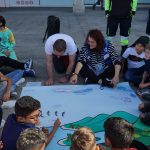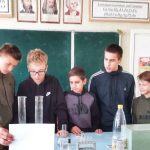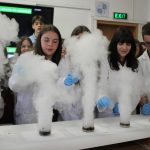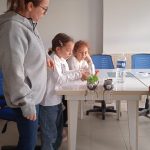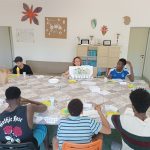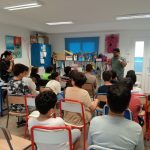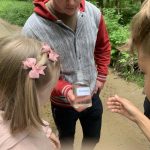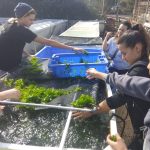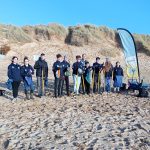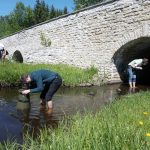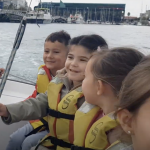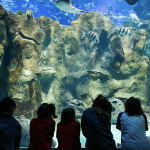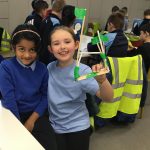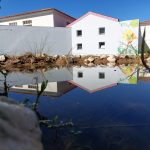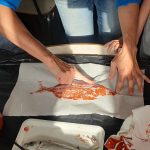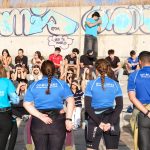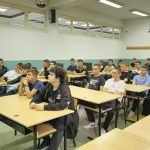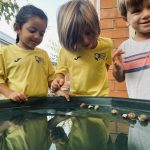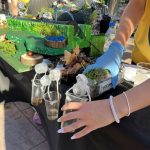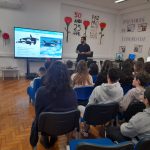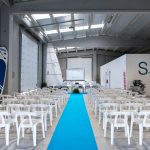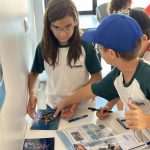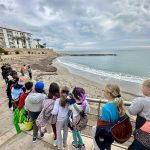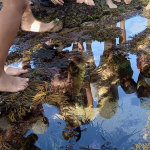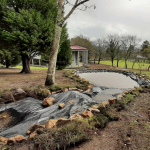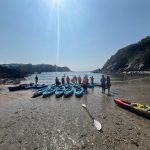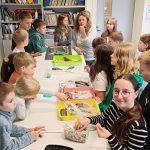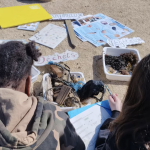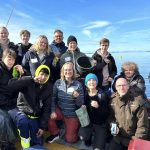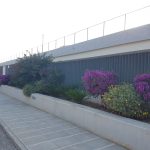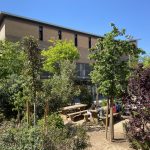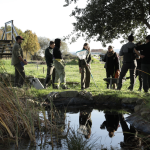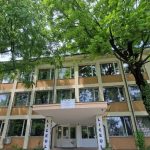
EYES on the Ocean
Laazibi, Morocco
3rd FUNDING CALL
What happens when students become environmental leaders in their own communities? The Empowering Youth for Ocean Sustainability through Education and Action (EYES) project is answering that question through hands-on ocean literacy, coastal conservation, and student-led community engagement. By equipping young people with the knowledge, tools, and confidence to act, EYES is building a generation of ocean stewards — and offering a model other schools can easily replicate.
Objectives: From Ocean Awareness to Active Protection
EYES is driven by a clear mission: to educate and empower primary and secondary school students to take meaningful action for the health of our oceans. Its main goals are:
- Increase Ocean Literacy by helping students understand marine biodiversity, ecosystem dynamics, and the impact of plastic pollution through workshops and field-based learning.
- Promote Direct Conservation Involvement, enabling students to participate in beach clean-ups, citizen science, and creative projects aimed at restoring ocean health.
- Raise Local Community Awareness through public events and student-led campaigns that share the project’s findings and inspire broader action.
- Develop Sustainable Educational Resources, including lesson plans and an interactive digital map that can be used by other schools across Europe, strengthening the Network of European Blue Schools (NEBS).
Activities and Collaborations: Learning by Doing, Teaching by Sharing
The EYES project unfolds in three interactive phases over 10 months, blending classroom learning, outdoor fieldwork, artistic expression, and digital content creation.
Phase 1: Educational Workshops and Planning (Months 1–3)
The project begins by forming a dedicated team of students, teachers, and volunteers. Through interactive workshops, students dive into topics such as marine ecosystems and the dangers of plastic pollution. They also begin developing lesson plans and classroom activities that will be woven into their regular science curriculum, laying the groundwork for deeper engagement.
Phase 2: Fieldwork and Conservation Action (Months 4–7)
This phase brings students to the shoreline to put their knowledge into practice:
- Coastal Clean-Up Events help reduce plastic waste and build firsthand awareness of its impacts.
- Eco-Friendly Fishing Net Workshop introduces students to sustainable alternatives and the consequences of harmful fishing methods.
- Ocean Debris Art Project encourages creativity by turning collected debris into artworks representing marine life — blending environmental science with self-expression.
These activities connect students not only to their local marine environment, but to the larger global challenge of ocean conservation.
Phase 3: Dissemination and Lasting Impact (Months 8–10)
The final phase focuses on sharing what students have learned — and what they’ve accomplished.
- A public event invites families, community members, and local leaders to hear student presentations and explore displays of marine biodiversity data and pollution findings.
- An interactive digital map is created using student-collected data, showcasing local marine species, conservation zones, and pollution hotspots. This tool is designed to be easily accessed and used by other schools within NEBS.
- A student-led promotional campaign spreads the message online and throughout the community through videos, posters, and social media content.
Outputs: Tools for Today and Tomorrow
EYES produces several impactful resources that extend beyond the classroom:
- Two educational modules on marine ecosystems and plastic pollution, including translated lesson plans and practical activities available online for free.
- An interactive digital map displaying local marine biodiversity and threats, built with real data from student fieldwork.
- Public outreach materials, including campaign videos and visual content created by students for events and online sharing.
- A final project report, outlining key lessons and outcomes, designed to support replication in other schools.
Impact: A New Wave of Ocean Stewards
The EYES project does more than raise awareness — it drives action. By the end of the project, at least 80% of participating students will have contributed directly to conservation activities, helping to clean up their coastlines and educate their communities. The project supports the EU’s mission to “Restore Our Ocean and Waters by 2030” and helps expand the reach of the European Blue Schools network.
But the true legacy of EYES lies in its students — confident, informed, and inspired to be caretakers of the seas.



